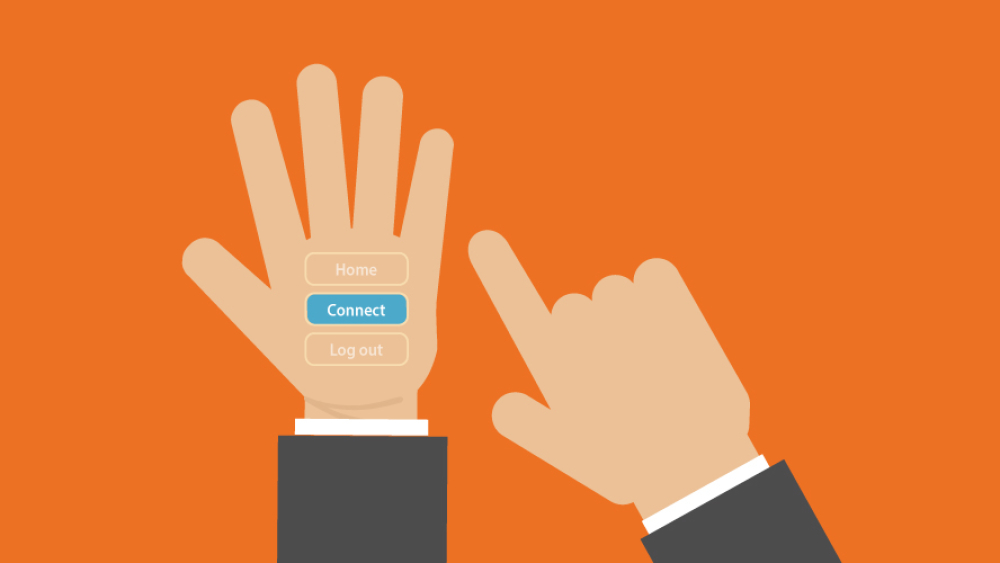Beyond touchscreens to haptic interfaces, gesture and voice control: new interactions and interfaces
14 May 2014

The second of our series of blogs on the future of mobile and connected marketing looks at the new era of interfaces, wearable devices and the Internet of Things (IoT). It’s a phrase applied to this new world of connected devices, from voice and gesture controlled devices to smart machines that talk to each other.
How will interfaces and the way people interact with them change?
In the same way that smartphones shifted digital interactions away from keyboards and buttons, to touchscreens and finger-based navigation we will see a proliferation of connected and wearable devices accompanied by new forms of interaction. We’re already beginning to see them in desktop and smartphones. For instance, Apple’s Siri and Google Now and Microsoft’s Cortana are early examples of how voice commands, combined with intelligent assistants can control devices.
The gesture control of Nintendo’s Wii/ Xbox Kinnect/ Playstation Move will be applied to smaller devices such as mobiles and tablets. The Leap Motion controller is a demonstration of how this can be delivered cheaply and effectively. Haptic screens will bring depth to our interactions with three-dimensional gestures (already demonstrated by Microsoft) and screens that can alter their sense of texture.
Looking further ahead (but not that far ahead), we will see computing controlled directly by brain sensors. In other words, thought controlled. Last year Havard created a brain-to-brain interface that allows people to control animals through thought alone. Sounds pretty fantastical but then so did Siri a decade ago.
Will a single interface dominate?
No, what we’ll see is people using a range of interfaces depending on the device used and their need at any given time. We will use a range or combination of interactions (touch, gesture, voice, and eventually thought) depending our personal preference and need.
What are the challenges for marketers?
Marketers will need to understand the new user experience and the specific needs on these interfaces to avoid repeating the mistakes of the past. Brands often struggle to understand touch screens, which means that they deliver an inadequate user experience. User logins and complex forms are typical examples of this failure. Instead brands could use functions such as dragging and dropping items in a specific order instead of passwords. In the future, unique identification features such as fingerprints, heart pulses or even an individual’s footsteps may entirely replace the need for logins. Attempting to apply a desktop or even a touch screen experience for these new interfaces will drive users away. Brands need to reconsider the user experience and understand the specific needs and possibilities of these new interactions.
How about wearable and connected devices? What are they and how widespread is their use?
With powerful computing becoming cheaper there will be more connected devices in new forms. The Internet of Things will see increasing numbers of connected, intelligent objects from personal items to household appliances and cars. Google Glass (currently in Beta) is just one example of where wearables may head, but other developers are looking at wrist-based devices and other discreet forms of computing. It’s important to understand that it’s still early days though, and most products are little more than prototypes. We are therefore unlikely to see mass adoption in the same way as we did with smartphones. Instead, people will choose devices that meet their own specific needs.
For example, we’re seeing the development of connected devices to help people manage their health from life-logging through to personal diagnosis scanners. There’s even an app that tracks food poisoning incidents and lists restaurants that may make you sick.
As apps and wearable technology that aids health management take off, we will see an older audiences adopting these devices. And as with all other technology channels, the way in which these devices are used by different demographics will differ significantly. Ultimately, people will create their own personal technology ecosystem that addresses their unique needs.
Beyond the next generation, robotics will become more commonplace. Although we are many years away from true artificial intelligence, better and cheaper computing combined with many new sensors will see clever robots addressing specific tasks. One such example are autonomous flying vehicles (drones), where we are already seeing quadracopters used for many different applications.
What are the opportunities for marketers?
Connected devices represent the next generation of computing after smartphones. ‘Wearables’ will create more personalised and individual experiences than smartphones currently do. Through connected objects brands will be able to understand more about their products, their customers, and their customers’ use of their products. This brings an opportunity for brands to focus on delivering a better service and user experience. As I said earlier, it’s still very early days and most products are little more than prototypes.
The ability to roll out cheap computing will see more brand services becoming products. Fitness trackers such as Nike Fuel, Fitbit or Jawbone are the current leading example of these, but simple devices such as the Red Tomato Pizza fridge magnet, show that solutions do not have to come from years of development or vast investment. Drones are an example of how brand service can be improved through the proliferation of technology – from delivering defibrillators in remote areas, to DHL Germany’s parcel service or Amazon’s Prime Air.
What are the challenges for marketers?
Mobile phones are unique, unshared and personal devices. Wearables will be even more so. For brands to enter into this new space will require a different understanding of user permissions, where best practice will not simply be a nice-to-have, but a necessity.
Consumers tend to adopt much faster than brands, and as Gilbert Hill said in the last blog, they create their own channels. That is a trend that is likely to accelerate. Users are not driven by brand marketing efforts, but rather by their own needs and desires. Marketers will need to think entirely in terms of personalised, relevant and contextualised customer experiences.
Wearables, connected devices and robotics offer some exciting brand opportunities, but brands will need to think about service first, and avoid trying to push users to engage through new behaviours. There is also the danger that continual engagement across these many, highly personal channels may simply lead to user fatigue with brands.
We may also see fatigue from the marketers as they struggle with the emerging technology. The complexity of big/small data, continual need for investment, budget restrictions, or brand focus on ROI or measurability may all stifle the creation of a meaningful brand engagement.
What will happen to the mobile?
While we will see new screens and interactions, the core functions of a smartphone are unlikely to change significantly. It will still be important for some time to come, where it becomes more of a dashboard that manages the multitude of personal devices around us.
In the final blog in our series Jason Cross will look at the powerhouse of one-to-one communication – data – which used wisely could in time create ‘a cloud of me’.
By DMA guest blogger Mark Brill, Managing Partner UK: strategy, ideation and training, BrandEmotivity and DMA Mobile & Connected Marketing Council Chair
Read part 1 of this series, The future of mobile and connected marketing: challenges and opportunities for brands


1.png)


Please login to comment.
Comments